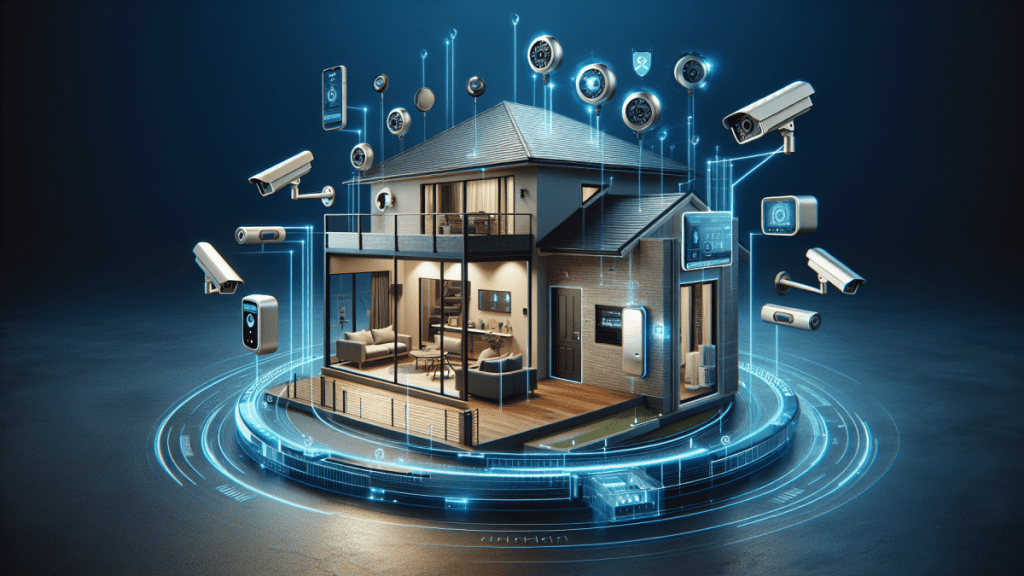With security increasing online, your home needs to follow. As more smart home devices become available and as we continue to depend on internet-connected gadgets, utilizing reliable online maximum security is essential. Follow our comprehensive guide to learn how to protect your devices and personal data; securing the home in an online world.
1. Understand the Importance of Online Maximum Security
As our physical spaces got locked up in the name of maximum security, we began to understand that concept includes also our digital environments. Smart home technology has never been more prevalent with security cameras, smart locks and voice assistants all working to allow our homes to be connected. Unfortunately, along with the convenience that these devices bring comes added vulnerability to cybercrime. Get a sense of the risks and countermeasures to foster online security excellence
2. Secure Your Home Network
Your home Wi-Fi network is the gateway to all your connected devices. Ensuring its security is the first step towards online maximum security. Start by changing the default login credentials on your router; default usernames and passwords are easily found online, making your network a prime target. Use a strong, unique password and enable WPA3 encryption, which offers enhanced security over its predecessors.
In addition to these measures, consider setting up a guest network. This separates your primary network from any devices visitors might connect, reducing the risk of compromise. Regularly update your router’s firmware to patch any security vulnerabilities and disable remote management to prevent unauthorized access.
3. Protect Your Smart Devices
Smart devices, while convenient, are often the weakest link in your home’s security chain. To ensure maximum security, start by changing the default passwords on all devices. Just as with your router, strong, unique passwords are essential. Consider using a password manager to keep track of them.
Enable two-factor authentication (2FA) on devices that support it. This adds an extra layer of security, requiring not just a password but also a second form of verification, such as a code sent to your phone. Regularly check for firmware updates on your smart devices and apply them promptly, as manufacturers often release updates to address security vulnerabilities.
If your smart devices come with privacy settings, customize them to minimize data sharing. For instance, turn off voice assistants when not in use and disable features like remote access if they aren’t necessary.
4. Implement Strong Password Practices
Weak passwords are a significant security risk. To achieve online maximum security, your passwords should be long, complex, and unique for each account. Avoid using easily guessable information, like your name or birthdate. Instead, opt for a combination of letters, numbers, and special characters.
A password manager can be invaluable for managing your passwords. These tools generate and store strong passwords, reducing the likelihood of a security breach. Additionally, regularly updating your passwords further fortifies your defenses against cyber threats.
5. Use a Virtual Private Network (VPN)
A Virtual Private Network (VPN) is a crucial tool for online maximum security. A VPN encrypts your internet connection, making it difficult for cybercriminals to intercept your data. This is particularly important when accessing your home network remotely or using public Wi-Fi, which is notoriously insecure.
When choosing a VPN, opt for a reputable provider with strong encryption standards and a no-logs policy. This ensures that your online activities remain private and secure.
6. Enable Firewall and Antivirus Protection
Firewalls and antivirus software are essential components of online maximum security. A firewall monitors incoming and outgoing network traffic, blocking unauthorized access, while antivirus software detects and removes malicious software.
Ensure that both your firewall and antivirus software are enabled and kept up to date. Some routers come with built-in firewall capabilities, which can be supplemented with additional software on your devices.
7. Educate Your Household
Online maximum security isn’t just a one-person job—it’s a team effort. Educate everyone in your household about the importance of online security. Teach them to recognize phishing attempts, avoid clicking on suspicious links, and the importance of regular software updates.
Encourage the use of strong, unique passwords and ensure everyone understands the risks associated with sharing sensitive information online. By fostering a security-conscious environment, you can significantly reduce the risk of cyber threats.
8. Backup Your Data Regularly
Despite your best efforts, no system is entirely foolproof. Regularly backing up your data ensures that you can recover important files in the event of a security breach. Store backups in a secure location, preferably offline or in the cloud with strong encryption.
Achieving online maximum security for your home requires a multi-layered approach that addresses both hardware and software vulnerabilities. By securing your home network, protecting smart devices, using strong passwords, enabling VPNs, and educating your household, you can significantly enhance your home’s digital defenses. In today’s connected world, prioritizing online maximum security is not just a choice—it’s a necessity.
